Exclusive: How Amateur Sleuths Broke the Wuhan Lab Story and Embarrassed the Media
BY
https://prod-streaming-video-msn-com.akamaized.net/7c3288fc-f872-40b0-9961-b493c251cbaa/2cd3ab03-0cad-4583-ace1-09441ab4_650.mp4
For most of last year, the idea that the coronavirus pandemic could have been triggered by a laboratory accident in Wuhan, China, was largely dismissed as a racist conspiracy theory of the alt-right. The Washington Post in early 2020 accused Senator Tom Cotton of "fanning the embers of a conspiracy theory that has been repeatedly debunked by experts." CNN jumped in with "How to debunk coronavirus conspiracy theories and misinformation from friends and family." Most other mainstream outlets, from The New York Times ("fringe theory") to NPR ("Scientists debunk lab accident theory"), were equally dismissive. (Newsweek was an exception, reporting in April 2020 that the WIV was involved in gain-of-function research and might have been the site of a lab leak; Mother Jones, Business Insider, the NY Post and FOX News were also exceptions.) But in the last week or so, the story has burst into the public discourse. President Joe Biden has demanded an investigation by U.S. intelligence. And the mainstream media, in an astonishing about-face, is treating the possibility with deadly seriousness.
The
reason for the sudden shift in attitudes is clear: over the weeks and
months of the pandemic, the pileup of circumstantial evidence pointing
to the Wuhan lab kept growing—until it became too substantial to ignore.
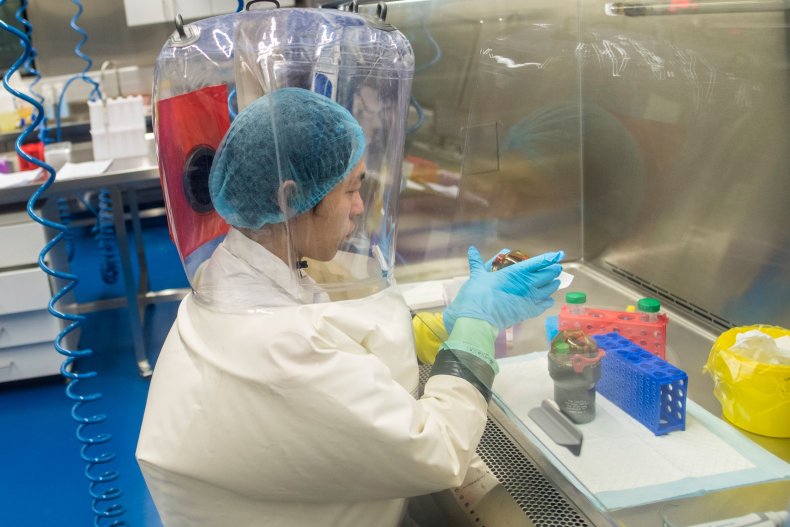
The
people responsible for uncovering this evidence are not journalists or
spies or scientists. They are a group of amateur sleuths, with few
resources except curiosity and a willingness to spend days combing the
internet for clues.
Throughout the pandemic, about two dozen or so
correspondents, many anonymous, working independently from many
different countries, have uncovered obscure documents, pieced together
the information, and explained it all in long threads on Twitter—in a
kind of open-source, collective brainstorming session that was part
forensic science, part citizen journalism, and entirely new. They call
themselves DRASTIC, for Decentralized Radical Autonomous Search Team Investigating COVID-19.
For a long time, DRASTIC's discoveries stayed confined to the strange world of Twitter,
known only to a few nerdy followers. The sleuths ran into a fair number
of dead ends, got into the occasional spat with scientists who
disagreed with their interpretations, and produced a firehose of
reporting. Gradually, the quality of their research and the rigor of
their thinking drew a larger following, including many professional
scientists and journalists.
The
people responsible for uncovering this evidence are not journalists or
spies or scientists. They are a group of amateur sleuths, with few
resources except curiosity and a willingness to spend days combing the
internet for clues. Throughout the pandemic, about two dozen or so
correspondents, many anonymous, working independently from many
different countries, have uncovered obscure documents, pieced together
the information, and explained it all in long threads on Twitter—in a
kind of open-source, collective brainstorming session that was part
forensic science, part citizen journalism, and entirely new. They call
themselves DRASTIC, for Decentralized Radical Autonomous Search Team Investigating COVID-19.
 For a long time, DRASTIC's discoveries stayed confined to the strange world of Twitter,
known only to a few nerdy followers. The sleuths ran into a fair number
of dead ends, got into the occasional spat with scientists who
disagreed with their interpretations, and produced a firehose of
reporting. Gradually, the quality of their research and the rigor of
their thinking drew a larger following, including many professional
scientists and journalists.
For a long time, DRASTIC's discoveries stayed confined to the strange world of Twitter,
known only to a few nerdy followers. The sleuths ran into a fair number
of dead ends, got into the occasional spat with scientists who
disagreed with their interpretations, and produced a firehose of
reporting. Gradually, the quality of their research and the rigor of
their thinking drew a larger following, including many professional
scientists and journalists.
Thanks to DRASTIC, we now know that
the Wuhan Institute of Virology had an extensive collection of
coronaviruses gathered over many years of foraging in the bat caves, and
that many of them—including the closest known relative to the pandemic
virus, SARS-CoV-2—came from a mineshaft where three men died from a
suspected SARS-like disease in 2012.
We know that the WIV was actively
working with these viruses, using inadequate safety protocols, in ways
that could have triggered the pandemic, and that the lab and Chinese
authorities have gone to great lengths to conceal these activities. We
know that the first cases appeared weeks before the outbreak at the
Huanan wet market that was once thought to be ground zero.
None
of this proves that the pandemic started in the Wuhan lab, of course:
it's entirely possible that it did not. But the evidence assembled by
DRASTIC amounts to what prosecutors call probable cause—a strong,
evidence-based case for a full investigation. It's not clear that the
best efforts of the U.S. and other nations to investigate the lab-leak
hypothesis will ever turn up unequivocal evidence one way or another, at
least without the full cooperation of China, which is unlikely.
But if they do, this small, motley group of amateur sleuths will have broken what may be the biggest story of the 21st century.
This is how they did it.
Strange coincidences
The young Indian man who calls himself The Seeker is
in his late-20s, lives somewhere in eastern India, and uses a piece of
tribal art from his home region of West Bengal for his Twitter logo, he
said via email.
His career has been a melange of architecture, painting,
and filmmaking—a khichdi, his mother and sister call it, meaning a stew
of disparate ingredients that adds up to something surprising and
delightful. A voracious autodidact, he'd become an expert at searching
the back alleys of the web, far beyond the well-lit places patrolled by Google, for information on whatever topic interested him.
He often posted on Reddit, where he had accumulated a massive 750,000 karma points. That's all The Seeker revealed to Newsweek through email and messaging; he maintains his anonymity.
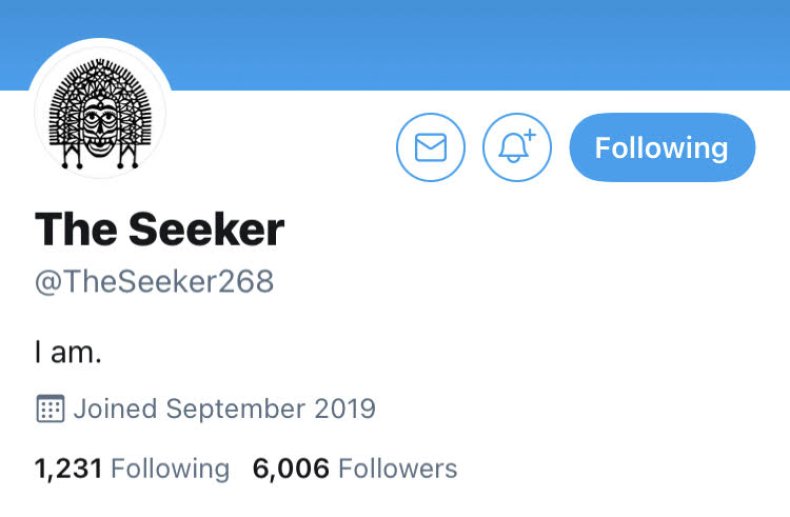
The Seeker's Twitter bio. The people responsible for bringing the Wuhan lab-leak story to light are not journalists or spies or scientists. They are amateur sleuths with few resources except curiosity and a willingness to spend days combing the internet for clues.TWITTER
Like most people following the news back when the pandemic started, The Seeker initially believed that the virus had jumped from wild animals to humans at a Wuhan wet market. (On March 27 he tweeted, "Nobody wants to see their parents or grandma and grandpa die over a stupid virus from an exotic animal market.") He believed this because that's what the mainstream press told him, and the mainstream press believed it because that is what a handful of scientists had said.
Chief among these scientists was a biologist named Peter Daszak, president of EcoHealth Alliance, a non-profit research group that ran a large international program to survey natural pathogens with the potential to cause a pandemic. Daszak had been collaborating for years with Shi Zhengli, the director of the Wuhan Institute of Virology and a renowned bat virologist. Daszak co-authored nearly a dozen papers with Shi and funneled at least $600,000 of U.S. government grants her way.
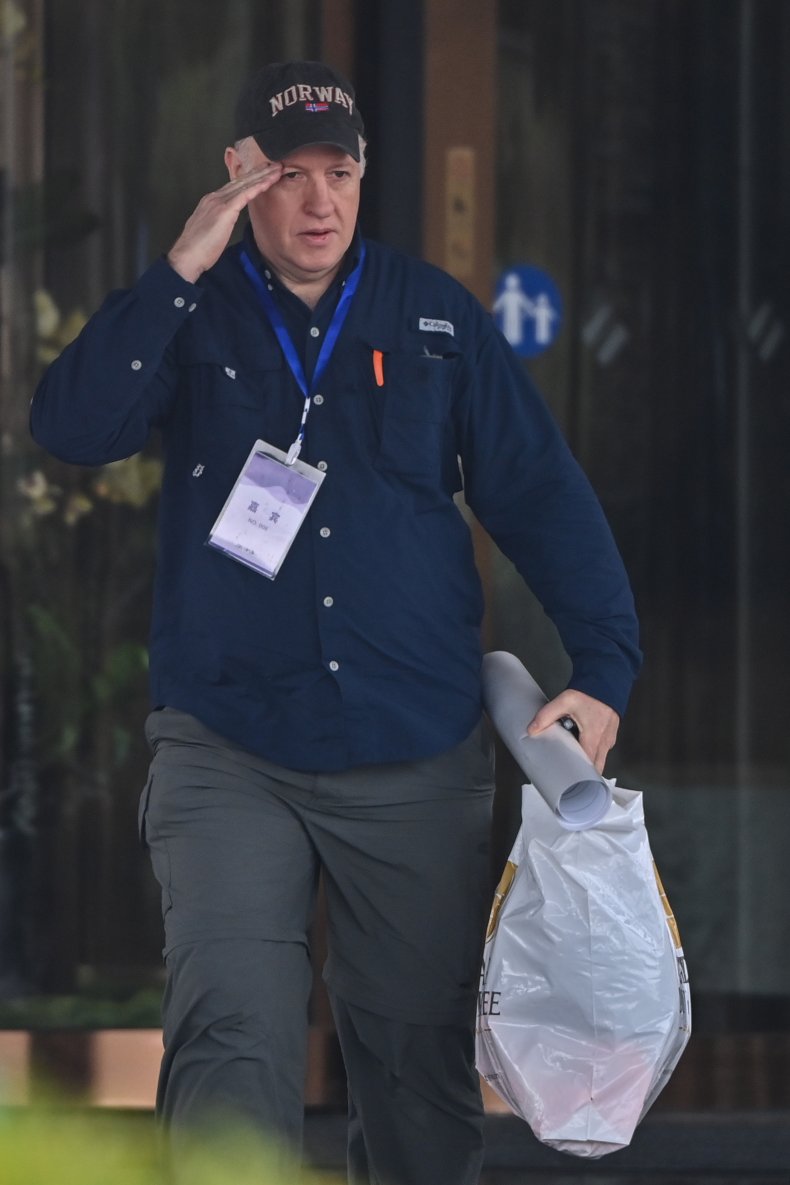
When the pandemic happened to break out on the doorstep of the lab with the largest collection of coronaviruses in the world, fueling speculation that the WIV might be involved, Daszak and 26 other scientists signed a letter that appeared in The Lancet on February 19, 2020. "We stand together to strongly condemn conspiracy theories suggesting that COVID-19 does not have a natural origin," it stated.
We now know, thanks to a Freedom of Information Act request,
that Daszak orchestrated the letter to squelch talk of a lab leak. He
drafted it, reached out to fellow scientists to sign it, and worked
behind the scenes to make it seem that the letter represented the views
of a broad range of scientists.
"This statement will not have the
EcoHealth Alliance logo on it and will not be identifiable as coming
from any one organization or person," he wrote in his pitch to the co-signatories. Scientists whose work had overlapped with the WIV agreed not to sign it so they could "put it out in a way that doesn't link it back to our collaboration."
At
the time, however, there was no hint of Daszak's organizing role. The
letter helped make Daszak a ubiquitous presence in the media, where he
called a lab-leak "preposterous," "baseless," and "pure baloney." He
also attacked scientists who
published evidence pointing to the lab. Part of the reason the lab
theory made no sense, he argued, was because the Wuhan lab wasn't
culturing any viruses remotely similar to SARS-CoV-2. (Daszak has not
responded to Newsweek's request for comment.)
For a long time, Daszak was astonishingly influential. Few in the media questioned him or pointed out that his career and organization would be deeply damaged if it turned out his work had indirectly played a role in the pandemic. His unwitting accomplice was Donald Trump, who embraced the theory, turning what should have been a scientific question into a political one.
When the Trump administration canceled EcoHealth Alliance contracts that would have spent millions on new virus research, 60 Minutes ran a segment that painted Daszak as a martyr to the right-wing conspiracy machine. For right-thinking people everywhere, it seemed like an easy call: The enemy of my enemy is my friend: thus, the lab-leak theory is bunk.
Whiff of Censorship
By early 2020, The Seeker was beginning to question that viewpoint. He had begun to interact with people who were poking holes in the conventional wisdom.
One important piece was an extensive Medium post by the Canadian longevity entrepreneur Yuri Deigin that discussed RaTG13, a virus Shi Zhengli had revealed to the world in a February 3 paper in the journal Nature. In that paper, Shi presented the first extensive analysis of SARS-CoV-2, which had seemed to come from nowhere—the virus was unlike any that had been seen before, including the first SARS, which had killed 774 people from 2002 to 2004. In her paper, however, Shi also introduced RaTG13, a virus that is similar in genetic makeup to SARS-CoV-2, making it the only known close relative at the time.
The paper was vague about where RaTG13 had come from. It didn't say exactly where or when RaTG13 had been found, just that it had previously been detected in a bat in Yunnan Province, in southern China.
The paper aroused Deigin's suspicions. He wondered if SARS-CoV-2 might have emerged through some genetic mixing and matching from a lab working with RaTG13 or related viruses. His post was cogent and comprehensive. The Seeker posted Deigin's theory on Reddit, which promptly suspended his account permanently.
That early whiff of censorship piqued Seeker's curiosity, so he read more of the Twitter group's ideas. "I found a lively group of people eager to debate and explore the topic," he told Newsweek by email.
It was an eclectic group. There were entrepreneurs, engineers, and a microbiologist from the University of Innsbruck named Rossana Segreto. None of them had known each other in advance; they gravitated to the forum after independently concluding that the conventional wisdom of the origins of COVID-19 didn't make sense. Conversations were kept on track by a wisecracking coordinator living somewhere in Asia who went by the pseudonym Billy Bostickson, and whose Twitter icon was a cartoon of a beat-up lab monkey.
The Seeker fit right in. "They helped me catch up on the debate, and I started to educate myself," he says. "Before I knew it, I got hooked into the mystery." He was driven in part by curiosity, but also by a growing sense of civic duty. "COVID has taken the lives of countless people and devastated so many others. But it has also left so many clues that haven't been followed up. Humanity deserves answers."
The Seeker and the rest of the group became increasingly convinced that RaTG13 might hold the key to some of those answers. In a crackling thread, half a dozen participants hashed out its mysteries, combing the internet and the WIV's previous papers for clues.
If there is a moment when the DRASTIC team coalesced into something more than its disparate parts, it would be this thread. In real time, for all the world to see, they worked through the data, tested various hypotheses, corrected each other, and scored some direct hits.
The key facts quickly came together. The genetic sequence for RaTG13 perfectly matched a small piece of genetic code posted as part of a paper written by Shi Zhengli years earlier, but never mentioned again. The code came from a virus the WIV had found in a Yunnan bat. Connecting key details in the two papers with old news stories, the DRASTIC team determined that RaTG13 had come from a mineshaft in Mojiang County, in Yunnan Province, where six men shoveling bat guano in 2012 had developed pneumonia. Three of them died. DRASTIC wondered if that event marked the first cases of human beings being infected with a precursor of SARS-CoV-2—perhaps RaTG13 or something like it.
In a profile in Scientific American, Shi Zhengli acknowledged working in a mineshaft in Mojiang County where miners had died. But she avoided connecting it to RaTG13 (an omission she had made in her scientific papers as well), claiming that a fungus in the cave had killed the miners.
That explanation didn't sit well with the DRASTIC group. They suspected a SARS-like virus, not a fungus, had killed the miners and that, for whatever reason, the WIV was trying to hide that fact. It was a hunch, and they had no way of proving it.
At this point, The Seeker revealed his research powers to the group. In his online explorations, he'd recently discovered a massive Chinese database of academic journals and theses called CNKI. Now he wondered if somewhere in its vast circuitry might be information on the sickened miners.
Working through the night at his bedside table on phone and laptop, fueled by chai and using Chinese characters with the help of Google Translate, he plugged in "Mojiang"—the county where the mine was located—in combination with every other word he could think of that might be relevant, instantly translating each new flush of results back to English. "Mojiang + pneumonia"; "Mojiang + WIV"; "Mojiang + bats"; "Mojiang + SARS." Each search brought back thousands of results and half a dozen different databases for journals, books, newspapers, master's theses, doctoral dissertations. He combed through these results, night after night, but never found anything useful. When he ran out of energy, he broke for arcade games and more chai.
He was on the verge of calling it quits, he says, when he struck gold: a 60-page master's thesis written by a student at Kunming Medical University in 2013 titled "The Analysis of 6 Patients with Severe Pneumonia Caused by Unknown Viruses." In exhaustive detail, it described the conditions and step-by-step treatment of the miners. It named the suspected culprit: "Caused by SARS-like [coronavirus] from the Chinese horseshoe bat or other bats."
The Seeker dropped the link, without fanfare, on May 18, 2020, then followed up with a second thesis from a PhD student at the Chinese CDC confirming much of the information in the first. Four of the miners had tested positive for antibodies from a SARS-like infection. And the WIV had been looped in to test samples from them all. (Shortly after The Seeker posted the theses, China changed the access controls on CNKI so no one could do such a search again.)
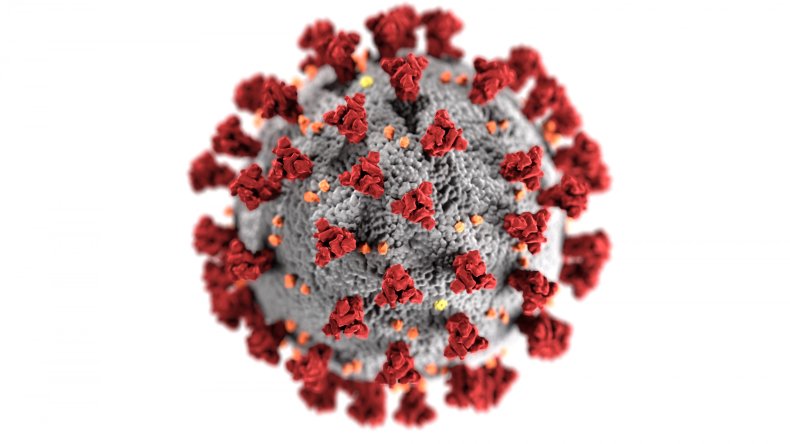
If a SARS-like virus had emerged in 2012, had been covered up, and the WIV had been sending people back to the mine to forage for more samples and bringing them back to Wuhan, that should have been front-page news the next day. Instead, not a single story appeared for weeks. A few stories appeared in the UK, including a feature in the Sunday Times. The U.S. media took a pass.
"I was definitely expecting it to blow up all over the news," The Seeker admits. "The general lack of interest in facts or reason surprised me. And it still perplexes me that even with all their resources, the corporate investigative media is lagging terribly."
Within days, DRASTIC managed to locate the coordinates of the mysterious Mojiang mine, but it would not catch the attention of the media until late 2020, when a race to get there began. The first attempt was by the BBC's John Sudworth, who found his path blocked by trucks and guards. (Sudworth would soon be forced to leave China because of his reporting.) The AP tried around the same time, with no better luck. Later, teams from NBC, CBS, Today, and other outlets also found their way blocked by trucks, trees, and angry men. Some were told that it was dangerous to proceed because of wild elephants. Eventually, a Wall Street Journal reporter reached the entrance to the mine by mountain bike—only to be detained for five hours of questioning. The mine's secrets remain.
A Huge Sudoku Puzzle
Although the Moijang mine revelation in May 2020 got nowhere in the media, it attracted new members to DRASTIC, which was able to expand its intelligence gathering to cover everything from viral genetics to biolab safety protocols. On May 21, 2020, Billy Bostickson dubbed the group "DRASTIC Research." He also began organizing the team into subgroups to focus on different aspects of the case. Soon, they were regularly posting discoveries that made lab involvement seem more likely.
A key team member was Francisco de Asis de Ribera, a Madrid data scientist who excels at mining big data sets. Over the years, the WIV had published a huge amount of information about its virus-hunting projects in different outlets and formats. Ribera began assembling it all into "a huge Sudoku puzzle," searching for places where he could fill in some of the blanks, slowly assembling a comprehensive map of the WIV's entire virus program. He and The Seeker made a formidable team, The Seeker unearthing new pieces of the puzzle and Ribera fitting them into place. ("I have always seen myself and Francisco as playing Detective McNulty and Detective Freamon from The Wire," The Seeker joked to Newsweek in one message.)
Ribera was responsible for solving another piece of the RaTG13 puzzle. Had the WIV been actively working on RaTG13 during the seven years since they discovered it? Peter Daszak said no: they had never used the virus because it wasn't similar enough to the original SARS. "We thought it's interesting, but not high-risk," he told Wired. "So we didn't do anything about it and put it in the freezer."
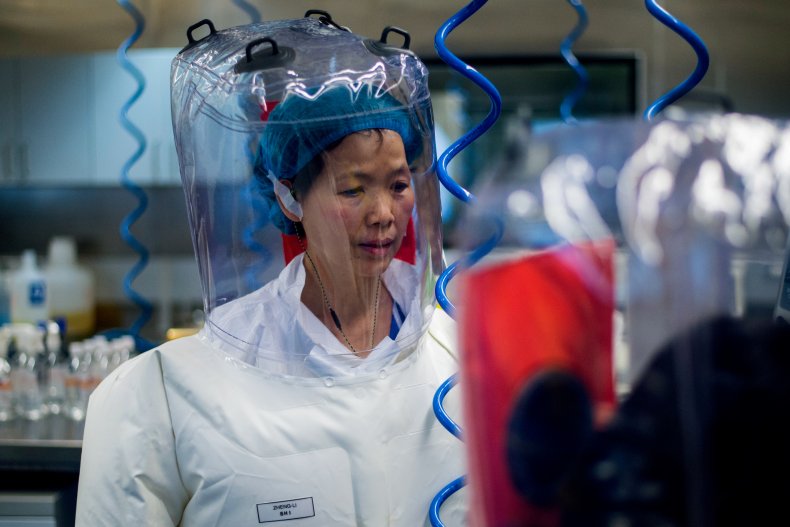
Ribera disproved that account. When a new science paper on genetics is published, the authors must upload the accompanying genetic sequences to an international database. By examining some metadata tags that had been accidentally uploaded by the WIV along with its genetic sequences for RaTG13, Ribera discovered that scientists at the lab had indeed been actively studying the virus in 2017 and 2018—they hadn't stuck it in a freezer and forgotten about it, after all.
In fact, the WIV had been intensely interested in RaTG13 and everything else that had come from the Mojiang mineshaft. From his giant Sudoku puzzle, Ribera determined that they made at least seven different trips to the mine, over many years, collecting thousands of samples. Ribera's guess is that their technology had not been good enough in 2012 and 2013 to find the virus that had killed the miners, so they kept going back as the techniques improved.
He also made a bold prediction. Cross-referencing snippets of information from multiple sources, Ribera guessed, in a Twitter thread dated August 1, 2020, that a cluster of eight SARS-related viruses mentioned briefly in an obscure section of one WIV paper had actually also come from the Mojiang mine. In other words, they hadn't found one relative of SARS-CoV-2 in that mineshaft; they'd found nine. In November 2020, Shi Zhengli confirmed many of DRASTIC's suspicions about the Mojiang cave in an addendum to her original paper on RaTG13 and in a talk in February 2021.
Of course, the only reason Ribera has had to perform such Sherlockian feats is because the WIV has not shared the data investigators have asked for. The WIV maintained a database on its website with all the data on the viruses in its collection, including the many unpublished ones, but that page on its website has been empty for some time. When asked about the missing database in January 2021, Shi Zhengli explained that it had been taken offline during the pandemic because the WIV web server had become the focus of online attacks. But once again, DRASTIC poked holes in this explanation: the database was taken down on September 12, 2019, shortly before the start of the pandemic, and well before the WIV would have become a target.
Other databases yielded other clues. In the WIV's grant applications and awards, The Seeker found detailed descriptions of the Institute's research plans, and they were damning: Projects were underway to test the infectivity of novel SARS-like viruses they'd discovered in human cells and in lab animals, to see how they might mutate as they crossed species, and to genetically recombine pieces of different viruses—all being done at woefully inadequate biosecurity levels. All the elements for a disaster were on hand.
Of course, that is not proof that a disaster took place. Barring unlikely eyewitness testimony, we may never have that. But all the evidence DRASTIC has produced points in the same direction: The Wuhan Institute of Virology had spent years collecting dangerous coronaviruses, some of which it has never revealed to the world. It was actively testing these viruses to determine their ability to infect people, as well as what mutations might be necessary to enhance that ability—likely with the ultimate goal of producing a vaccine that would protect against all of them. And the ongoing effort to cover this up implies that something may have gone wrong.
Going Mainstream
By early 2021, DRASTIC had produced so much information that no one could keep up, not even its own researchers, so they launched their own website as a repository. The site contains enough science papers, Twitter threads, translations of Chinese documents and links to articles to keep a curious gumshoe busy for months.
Increasingly, those gumshoes are professional journalists and scientists. "Rossana Segreto and Yuri Deigin are my heroes," says the writer Nicholson Baker, who published an influential feature on the lab-leak theory in New York magazine. "They combed through the research and made inspired connections and uncovered crucial pieces of the story that needed to be told. Same goes for Mona Rahalkar and Billy Bostickson. Crowd-sourced scientific muckraking."
The UK journalist Ian Birrell concurs. "There is no doubt their collective efforts...have been crucial in challenging both China and the scientific establishment to ensure the lab leak theory is properly investigated," he wrote in Unherd. "It has been fascinating to see, in the course of my investigations over the past year, how this group of activists—in tandem with a few brave scientists—has forced the lab leak hypothesis from the shadows."
One of those scientists was Alina Chan, a molecular biologist at the Broad Institute of MIT and Harvard who recognized the value of the information DRASTIC was producing and began to interpret it for scientists and nonscientists alike in crisp explainers on Twitter that made her a star science communicator. Chan acknowledged the group's accomplishments in a long thread on Twitter. "Without the work done by the DRASTIC team, I don't really know where we would be today with the origins of covid-19," she wrote, adding, "The work of these outsiders...has had a measurable impact on the scientific discourse."
That scientific discourse jumped tracks on January 6, 2021, when the University of Washington virologist Jesse Bloom, one of the country's most respected COVID-19 researchers, became the first major scientific figure to publicly legitimize DRASTIC's contributions. "Yes, I follow the work," he tweeted, sending tremors through the scientific establishment. "I don't agree [with] all of it, but some parts seem important & correct." Bloom singled out Mona Rahalkar's paper on the Mojiang mine, then added that in the early days of the pandemic, "I thought lab escape very unlikely. Based on subsequent work, I now say quite plausible."
Other scientists pressured Bloom to reconsider, but he held his ground, and the wall of silence began to crumble. In May, 17 scientists from Harvard, Yale, MIT, Stanford, and other leading institutions, including Chan, joined Bloom in a letter in Science calling for a thorough investigation of the Wuhan lab.
On nearly the same day, The Seeker struck again. Visiting a database hosted by China's Ministry of Science and Technology, he searched for all theses supervised by Shi Zhengli. Boom. Three hits. "I got it on my first try," he says. "Not sure why no one else thought of this before, but I guess no one was looking."
If there had been any remaining doubt about the WIV's pattern of deception, these new theses put it to rest. They indicated that the WIV researchers had never believed a fungus had killed the Mojiang miners, contradicting Shi's remarks in Scientific American and elsewhere. In fact, WIV researchers had been so concerned about a new SARS-like outbreak that they'd tested the blood of neighboring villagers for other cases. And they had known the genetic sequences for the eight other SARS-like viruses from the mine—which could have helped researchers to understand more about SARS-CoV-2 in the early days —long before the pandemic started, and had kept the information to themselves, until DRASTIC called them out.
Within days of the new revelations and the Science letter, more academics, politicians and even the mainstream media began to take the lab-leak seriously, culminating on May 26 when President Biden ordered U.S. intelligence agencies "to redouble their efforts to collect and analyze information that could bring us closer to a definitive conclusion." Biden promised that "the United States will also keep working with like-minded partners around the world to press China to participate in a full, transparent, evidence-based international investigation and to provide access to all relevant data and evidence."
So far China has been ice-cool to the suggestion. It may never cooperate with an investigation. But it's now clear that the question of whether a biolab could have caused this pandemic—and could cause the next—is going to be explored in a way that might never have happened if a radical and decentralized group of outsiders hadn't challenged the status quo.
That's a lesson The Seeker won't soon forget. "I no longer see science as an exclusive domain," he wrote to Newsweek. "Everyone can make a difference."
__

Ei kommentteja:
Lähetä kommentti
You are welcome to show your opinion here!